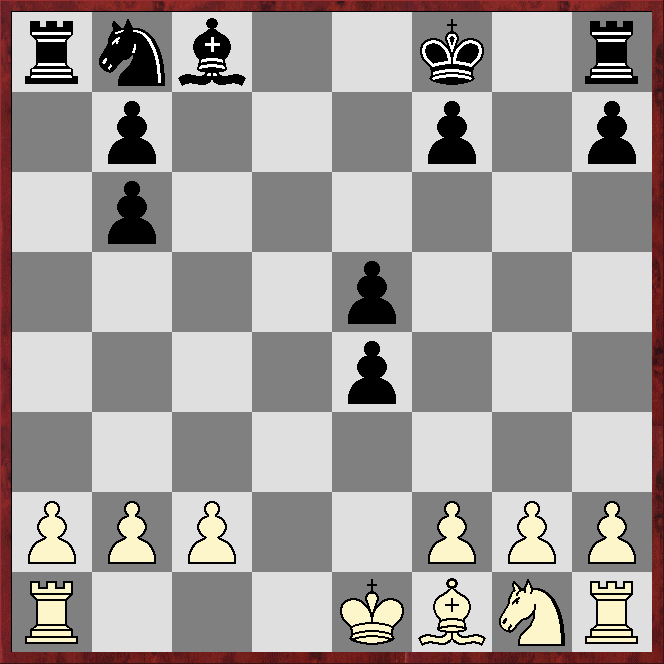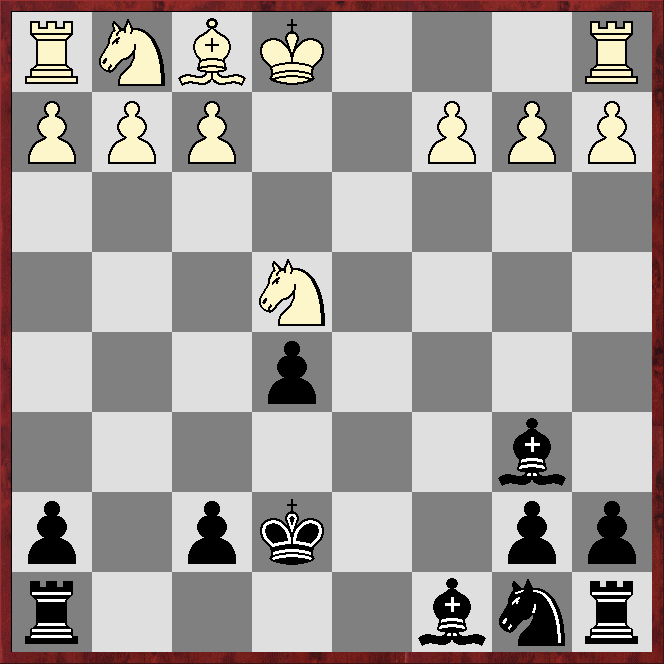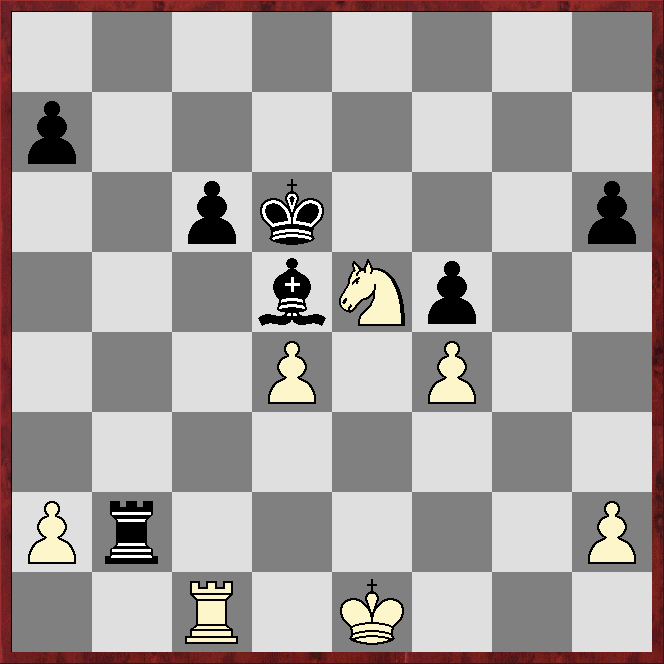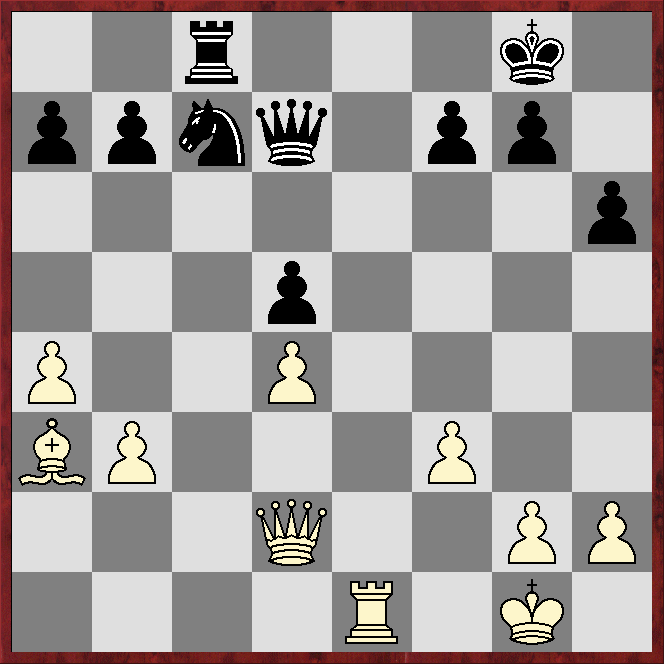IN round one of the Brno Open I faced a junior (born 2010) who went on to have a great tournament, gaining 122 Fide elo.
But against me he was lost after six moves, according to Stockfish15 and Komodo13.02.
The full game can be seen at
B1, but here I want to look at what went wrong and, perhaps more importantly, to try to propose a system for avoiding such mistakes.
Spanton (1771) - Adam Janský* (1205)
As is common in tournaments, the draw for the first round was posted after the round was supposed to start, so preparation for the opponent was not possible.
I accordingly decided to play 1.Nc3, which can transpose to mainline openings but can also take on independent significance.
Black replied 1...e5, which is entirely appropriate for a player who usually meets 1.e4 with 1...e5. Whether this is the case with AJ, I have not been able to discover as he appears to have no games in databases.
Naturally, if I had known AJ normally played the French Defence or the Sicilian, it would have been tempting to continue 2.e4, hoping he would be on unfamiliar ground.
Since I did not know that, I played the independent 2.Nf3, which was how the correspondence grandmaster and over-the-board international master Dick van Geet, after whom 1.Nc3 is sometimes named, liked to proceed.
Following 2...Nc6 I again kept the game in independent lines with 3.d4, which was met by the natural 3...exd4, and I recaptured with 4.Nxd4.
 |
| The position may look innocuous but Black already faces a critical choice |
*****
*****
*****
*****
*****
There are 72 games in ChessBase's 2022 Mega database with the plausible 4...d5?!, which gains space in the centre and opens a diagonal for the black dark-square bishop.
However after 5.Bf4 Black has to be very careful, eg the second-most popular response in Mega22 is 5...Nxd4?, when 6.Qxd4 leaves Black without a satisfactory response.
All 10 games in Mega22 to reach the position after 6.Qxd4 continue 6...c6, but both 7.0-0-0 and 7.e4 are winning, according to Stockfish15, although Komodo13.02 reckons the latter gives White 'only' the upper hand.
Better than 4...d5?! is the move AJ played, 4...Nf6, when 5.e4 transposes into the Scotch Four Knights, but I played 5.Bg5.
 |
| How should Black reply? |
*****
*****
*****
*****
*****
Breaking the pin with 5...Be7? occurs 92 times in Mega22, and has been played by grandmasters, but is a mistake.
Black should prefer 5...Bb4 or 5...Bc5, according to the engines, but let's look at why AJ's choice is bad - so bad that Stockfish15 reckons my reply gives a winning position, although the more-conservative Komodo13.02 again awards 'only' the upper hand.
The point is Black has no good way of meeting 6.Nf5!?, the third move for this piece, which means it has moved 50% of the time!
AJ tried 6...Nh5?, but this only makes matters worse, and after 7.Nxe7 Nxe7 the move 8.e4, as played as far back as K E Lean - John Drewitt, Hastings Christmas Major 1921-2, is devastating (I played the inferior 8.Nd5?!, but won anyway in 26 moves).
The Hastings game finished 8...Nf6 9.e5 Nfg8 10.Bc4 d6 11.Qh5 g6 12.Qf3 Be6 13.Bxe6 fxe6 14.0-0-0 d5 15.Ne4 Kd7? (15...Qd7 is better) 16.Nc5+ Kc8 17.Bf6 Nxf6 18.Qxf6 1-0.
So what thinking process can avoid moves like ...Be7?
I like to use a mantra that consists of "Captures, Checks, Hangers, Threats," which is similar to mantras suggested in training books.
The idea, and it is easy to forget it in the heat of battle, is, before moving, to:
A) Look at every move that captures a piece or pawn;
B) Look at every move that gives check;
C) Look if there are ways to exploit every piece and pawn that is hanging, ie is unprotected;
D) Look at possible threats, for example pawn moves that hit enemy pieces.
This should be carried out for both sides, and can usually be done quicker than it takes to explain the process.
It should also be done after making your planned move in your mind's eye.
 |
Position after the planned 5...Be7?
|
*****
*****
*****
*****
*****
Clearly, Captures and Checks are not particularly relevant here, eg Nxc6 can be met by recapturing with the b7 or d7 pawn without Black suffering much.
However ...Be7 does leave Black with a Hanger on g7, and White has the Threat of hitting the hanger and the dark-square bishop at the same time with 6.Nf5.
Black has two sensible ways of meeting both threats. One, 6...Bf8?, can be quickly dismissed as a retrograde move that puts Black in big trouble, not least because it allows 7.Nd5.
That leaves 6...0-0, when, at the very least, White can win the bishop-pair with 7.Nxe7+. But it is also not too difficult to see that both 7...Nxe7 8.Bxf6 and 7...Qxe7 8.Nd5 are unlikely to be satisfactory.
Having established that, it is natural to look for a better move than ...Be7.
The difficulty in all this is spotting the possibility of 6.Nf5, which is easy to ignore because the knight has already moved twice, and anyway the square f5 is not often occupied by a white piece early in a game.
And that is where the mantra comes in.
*A lot of Czech names have a lot of accents. The surname "Jansky" is often spelt Jánský, but in this case Janský appears to be correct.












































